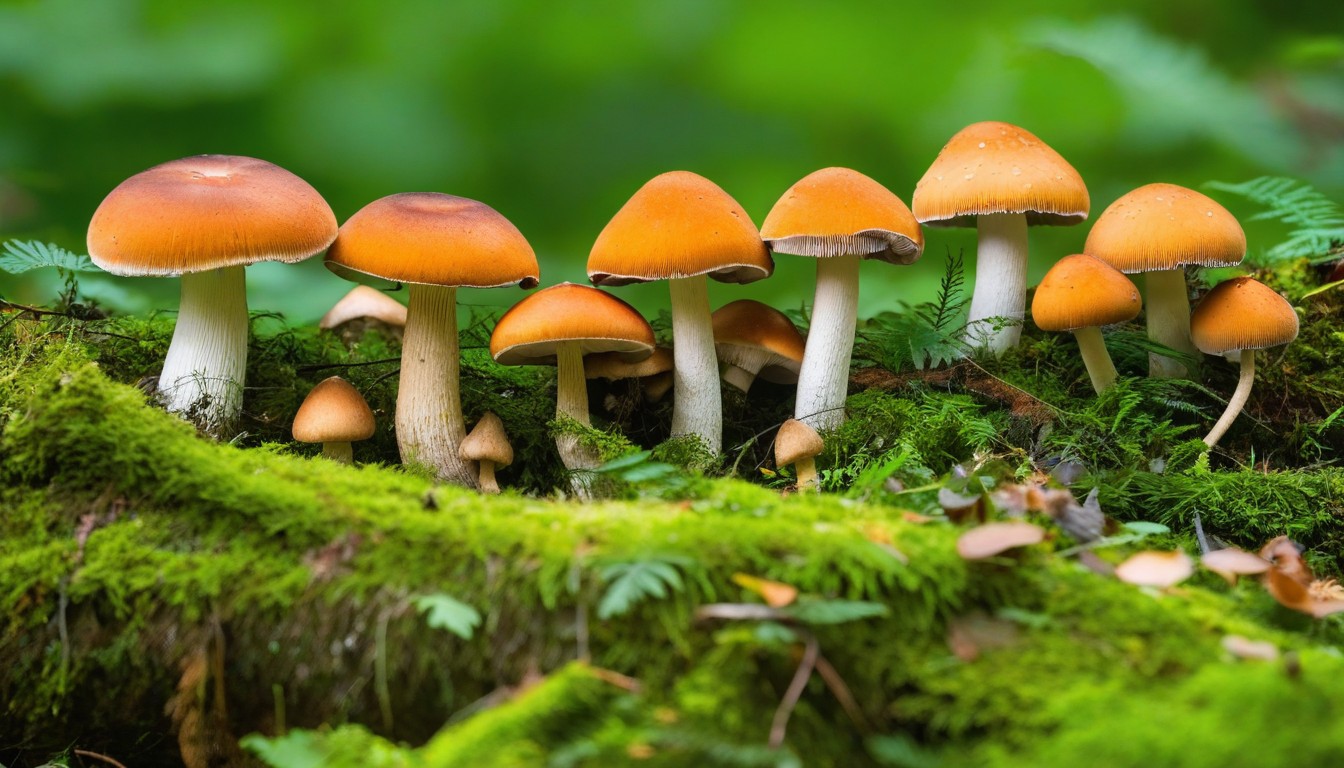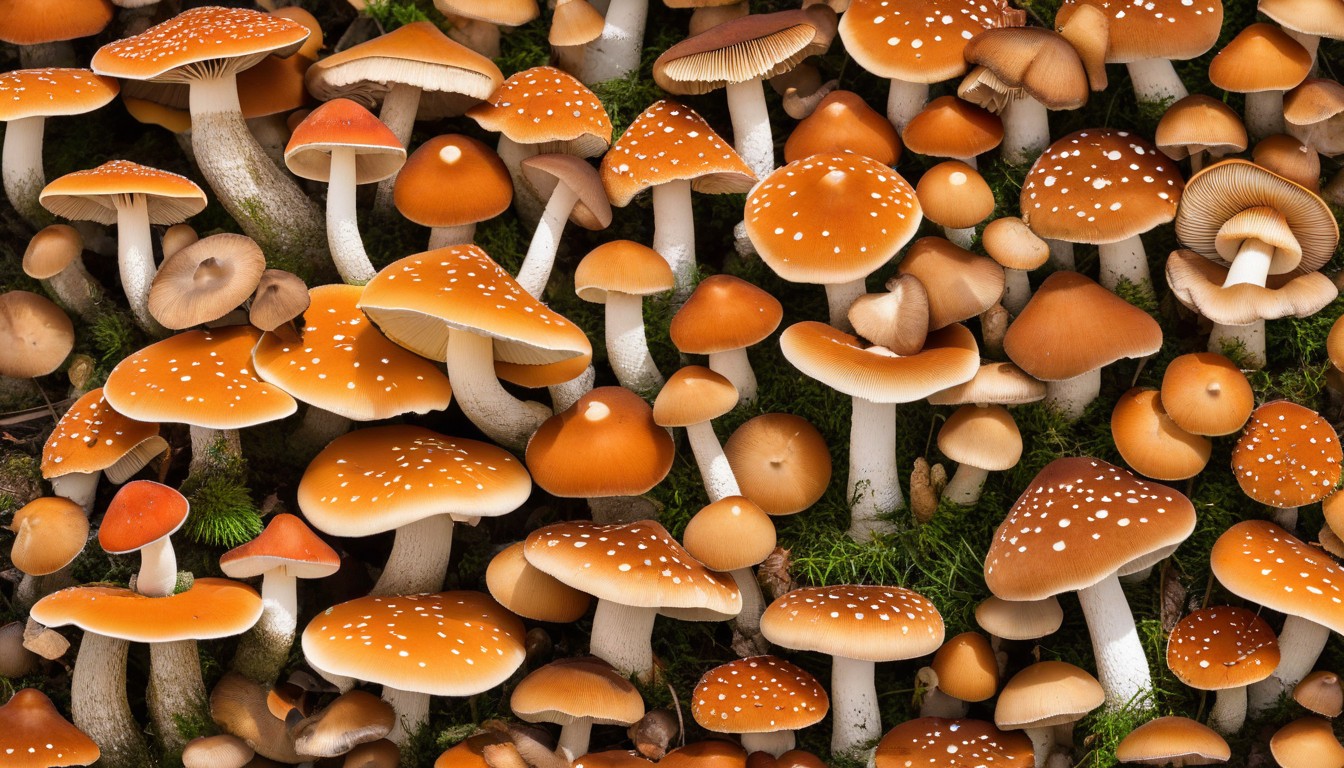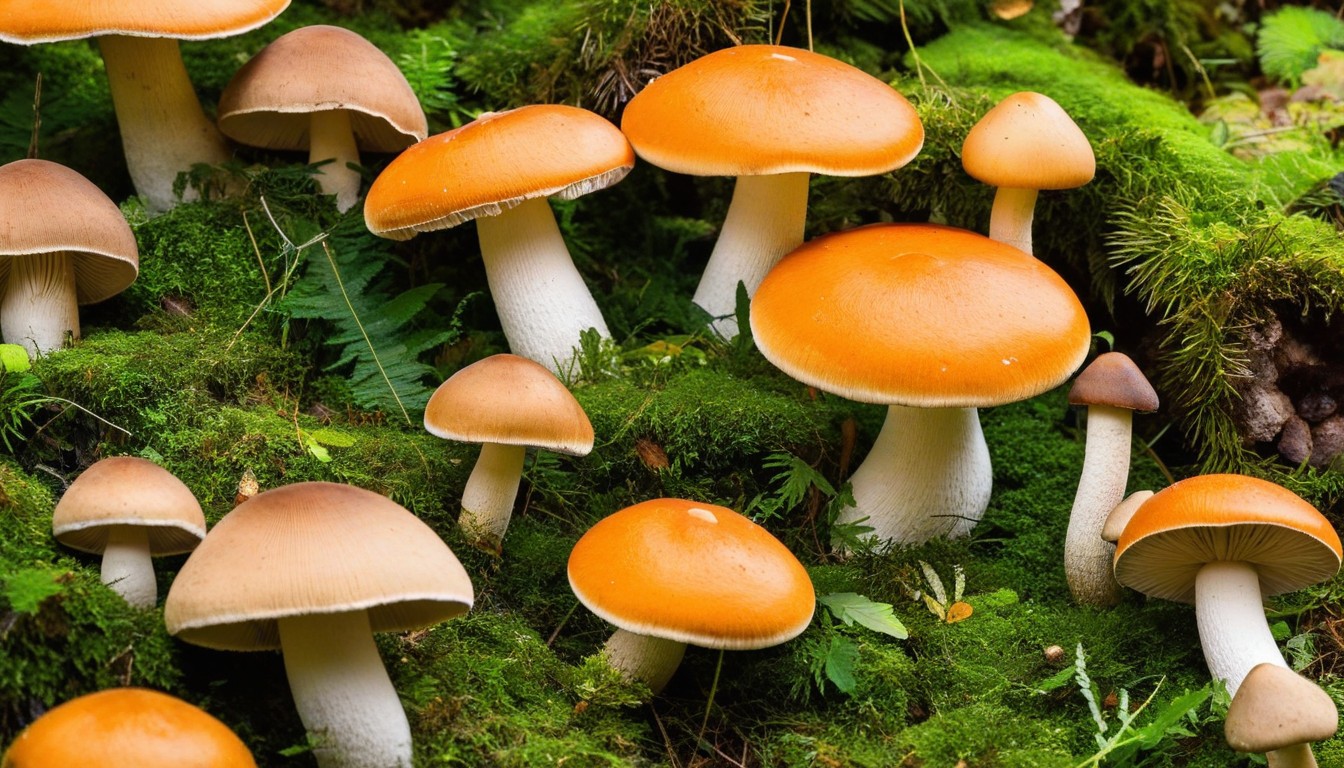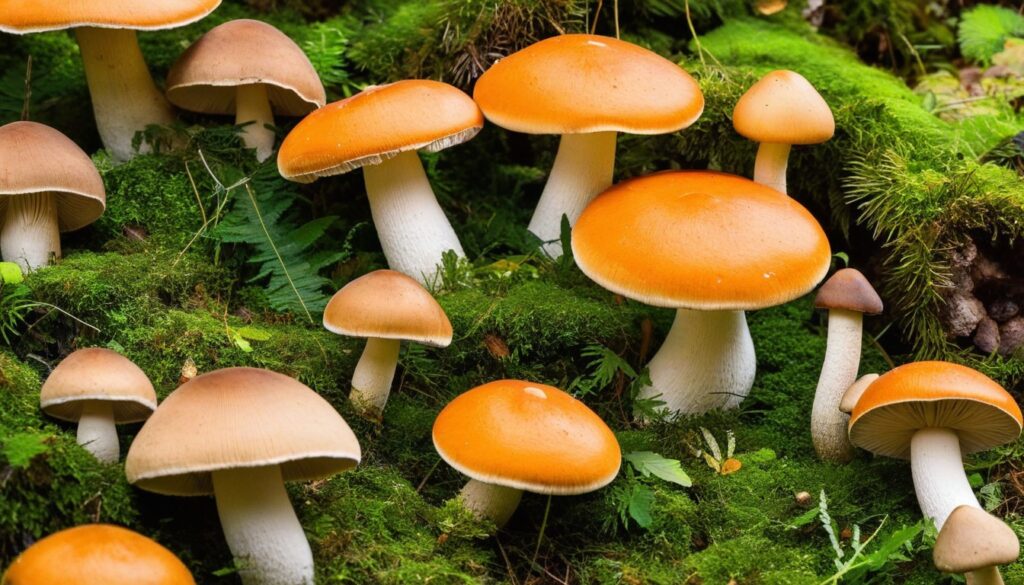If you’re an avid lover of mushrooms, Northern Arizona is a wonderland for you. The region is home to an abundance of edible mushroom species that are not only delicious but also offer nutritional benefits. However, mushroom foraging in Northern Arizona requires an understanding of the right season, identification, and safety precautions to avoid poisonous varieties. This article provides expert insights into the world of mushroom foraging in Northern Arizona, including hunting techniques, popular culinary uses, preservation methods, and sustainability measures.
Key Takeaways:
- Northern Arizona is a hotspot for edible mushroom species, offering diverse flavors and nutritional benefits.
- Mushroom foraging in Northern Arizona requires a good understanding of the right season, identification, and safety precautions to avoid poisonous varieties.
- Expert insights into hunting techniques, popular culinary uses, preservation methods, and sustainability measures are provided in this article.
- Mushroom foraging tours and workshops are available in Northern Arizona for those interested in guided experiences.
- Conservation and sustainability measures are crucial for the long-term preservation of these precious natural resources.
Understanding the Mushroom Foraging Season in Northern Arizona
Foraging for mushrooms in Northern Arizona is an exciting activity that requires an understanding of the seasons in which different varieties of fungi grow. The mushroom foraging season in Northern Arizona typically begins in late summer and extends through the fall months when the temperatures cool down and humidity increases.
Fall Foraging Season (September-November)
During the fall season in Northern Arizona, mushroom hunters can expect to find an abundance of different edible mushroom varieties. Some of the most common mushrooms that can be found during this season include:
|
Mushroom Name |
Season |
Description |
|---|---|---|
|
Boletus edulis |
September-November |
Also known as the “King Bolete,” this meaty and flavorful mushroom is highly sought after by mushroom hunters. |
|
Lactarius indigo |
September-November |
With its distinctive blue coloring and mild taste, this mushroom is often used as a garnish or in salads and soups. |
|
Cantharellus cibarius |
September-November |
Also called the “Golden chanterelle,” this mushroom has a distinct meaty flavor and is commonly used in sauces or as a side dish. |
It’s important to note that while there are many edible mushrooms available during the fall season, there are also many toxic and poisonous varieties that should be avoided. Always consult with an experienced forager or mushroom expert before consuming any wild mushrooms.
Spring Foraging Season (March-May)
In Northern Arizona, the spring season offers a smaller variety of edible mushrooms compared to the fall season. However, it’s still possible to find some delicious mushrooms during this time. Some of the most common mushrooms that can be found during the spring season include:
- Morchella
- Verpa bohemica
- Gyromitra
It’s important to note that springtime mushrooms may be smaller in size compared to those found during the fall season. Additionally, the number of mushrooms available may vary from year to year depending on weather conditions.
By understanding the different mushroom foraging seasons in Northern Arizona, hunters can prepare for their expeditions accordingly and maximize their chances of finding delicious and safe-to-eat mushrooms. Always remember to adhere to proper safety precautions and seek guidance from experienced foragers or mushroom experts.
Safety Precautions for Mushroom Foraging in Northern Arizona
If you’re interested in foraging for wild mushrooms in Northern Arizona, it’s essential to prioritize safety to avoid any potential health risks. Remember, not all mushrooms are edible, and some can be toxic if consumed. Here are a few safety precautions to keep in mind:
1. Know Your Mushrooms
Before heading out to forage, be sure to familiarize yourself with the types of mushrooms that grow in Northern Arizona and their identifying characteristics. Attend workshops or guided tours with experienced local foragers or use reputable field guides to learn more about mushrooms’ physical features and potential health effects. Don’t rely solely on online resources or apps, which may not provide accurate information.
2. Don’t Eat Everything You Find
While foraging, only collect mushrooms that you can positively identify as safe and edible. If you’re unsure about a mushroom’s species, leave it behind. Take the time to research and verify a mushroom’s identity before consuming it, even if it looks similar to a species you know is safe. Consuming a toxic mushroom can cause severe health consequences or even death.
3. Use Proper Equipment
Wear appropriate clothing and footwear for your foraging trip to protect yourself from injuries and exposure to harmful plants and creatures. Bring a basket or bag to collect your mushrooms, and carry a field guide, a knife, and a first-aid kit. Avoid using plastic bags, which can cause the mushrooms to sweat and spoil.
4. Respect the Environment and Other Foragers
Remember that foraging for mushrooms is a shared activity, and the spots where they grow are often sensitive ecosystems that should not be over-harvested. Avoid collecting every mushroom you see and practice sustainable foraging techniques such as only harvesting mature specimens and leaving some behind to disperse spores and propagate the species. Be respectful of private property and obtain the necessary permits and permissions before foraging in designated areas.
Toxic Mushrooms Found in Northern Arizona
|
Mushroom Name |
Common Symptoms |
|---|---|
|
Amanita muscaria |
Vomiting, hallucinations, confusion, coma |
|
Galerina marginata |
Abdominal pain, diarrhea, liver failure |
|
Chlorophyllum molybdites |
Severe vomiting and diarrhea, dehydration |
Note: This table is not comprehensive and should not be used as a substitute for proper identification and research of Northern Arizona’s wild mushrooms.
Identifying Common Edible Mushrooms in Northern Arizona

Foraging for edible mushrooms in Northern Arizona can be both exciting and rewarding. However, it’s crucial to identify the safe and edible species correctly. Here are five commonly found varieties that make for delicious meals:
|
Mushroom Name |
Characteristics |
Season |
|---|---|---|
|
Morel |
Distinct honeycomb appearance, hollow stem |
Spring |
|
Chanterelle |
Distinct trumpet shape, golden yellow color, delicate flavor |
Summer to fall |
|
Porcini |
Large cap, creamy white stem, nutty flavor |
Late summer to fall |
|
Shaggy Mane |
Long, thin, shaggy cap, dark and tapered stem, delicate flavor |
Late summer to fall |
|
Oyster |
Flat, fan-shaped cap, ivory to grayish-brown color, delicate flavor |
Spring to fall |
When foraging for mushrooms, ensure you’re using a reliable identification guide or consulting with a knowledgeable expert. Remember also to always leave some of the mushrooms behind to support conservation efforts for the preservation of future generations.
Hunting Techniques for Edible Mushrooms in Northern Arizona
Foraging for mushrooms requires patience, persistence, and the right hunting techniques. There are various methods you can use to find edible mushrooms in Northern Arizona:
- Scouting: Take a walk in the forest, looking for signs of mushrooms, such as colors, shapes, and textures on the ground. Pay attention to areas with decomposing trees, as they provide suitable growing conditions for many mushrooms. Look for mushrooms growing in clusters as they are often an indicator of edible species.
- Stick and Peek: The “stick and peek” method involves using a stick to move foliage or debris on the ground to reveal hidden mushrooms. Always use a stick, as dangerous insects and snakes can be lurking underneath. Be sure to replace any foliage disturbed during this method to maintain the environment’s balance.
- Basket weaver: For the basket weaver technique, collect only the upper parts of the mushroom and leave the lower portions to allow for spore distribution and promote regenerative growth for future harvests.
Remember to familiarize yourself with the area’s regulations and always obtain permits to collect mushrooms. Be sure also to seek advice from experienced foragers or trained mushroom experts to ensure you stay safe when handling, identifying, and consuming mushrooms.
Tips for Successful Mushroom Hunting

|
Tip |
Description |
|---|---|
|
Go Early and Often |
Go out as soon as the mushroom season begins, and frequently revisit locations as mushroom patches can bloom erratically. |
|
Be Prepared |
Carry a small knife, a stick, and a basket with a light cover to keep mushrooms intact and prevent spores from escaping. |
|
Wear Suitable Attire |
Protect yourself from scratches, ticks, and other insects by wearing long pants, long sleeves, and close-toed shoes. Carry bug spray and sunblock. |
|
Document Your Harvest |
Take photos of the mushrooms you collect, and document where and when you found each one in a notebook or journal. This will help you identify patterns and understand the area’s biodiversity better. |
Popular Culinary Uses for Edible Mushrooms Found in Northern Arizona
Edible mushrooms are a delicious and versatile ingredient that adds a unique flavor to various dishes. Here are seven popular culinary uses for the edible mushrooms found in Northern Arizona:
|
Mushroom Name |
Popular Culinary Uses |
|---|---|
|
Morel |
Stir-fries, stews, risottos, and sauces |
|
Chanterelle |
Grilled and served with steak, sauteed with garlic and butter, added to omelets or frittatas, and used in cream-based sauces |
|
Porcini |
Used in pasta dishes, risottos, sauteed with garlic and butter, added to soups, and as a pizza topping |
|
Shiitake |
Added to stir-fries, soups, and stews, grilled and used in sandwiches, and as a pizza topping |
|
Oyster |
Quickly sauteed with garlic, added to stir-fries, and used in soups and pasta dishes |
|
Lion’s Mane |
Sauteed with butter and garlic, grilled, and fried for a crispy texture, and added to stir-fries and soups |
|
Yellowfoot |
Addition to risottos, sauteed with butter and garlic, roasted, and used in soups |
In addition to these popular uses, chefs and home cooks alike experiment with various dishes utilizing the unique taste and texture of edible mushrooms. Don’t be afraid to get creative in the kitchen and explore different culinary uses for the mushrooms you find while foraging in Northern Arizona!
Preserving and Storing Edible Mushrooms in Northern Arizona

After a successful mushroom foraging expedition, it’s essential to preserve and store your harvest correctly. Proper storage will ensure your mushrooms stay fresh for longer periods and retain their flavor. Here are some ways to store edible mushrooms:
Drying Mushrooms
The most common method of preserving mushrooms is drying. Place clean and sliced mushrooms on a tray in a single layer, leaving enough space for air circulation. Set the temperature between 90-95°F with low humidity, and allow them to dry for several hours. Alternatively, a food dehydrator can also be used. Once the mushrooms are dried, store them in an airtight container in a cool, dry place.
Freezing Mushrooms
Another option is freezing mushrooms. If you plan to use them within six months, simply clean them and place them in a plastic bag. Seal and label the bag with the date before placing them in the freezer. Before cooking, allow them to thaw completely, and then rinse them thoroughly to remove any ice crystals.
Canning Mushrooms
Canning is a great option for preserving large quantities of mushrooms. Clean and cut the mushrooms into small pieces. Pack them into jars, adding vinegar or lemon juice to prevent discoloration. Pressure can the jars as per the manufacturer’s instructions, and then store them in a cool, dark place. Canned mushrooms can last up to a year.
Storing Mushrooms in Oil or Vinegar
You can also store mushrooms in oil or vinegar. Clean and blanch the mushrooms for a few minutes, then place them in sterilized jars. Cover the mushrooms with oil or vinegar and store them in a cool, dark place. These mushrooms can last up to six months.
Properly stored mushrooms can provide a delicious addition to your culinary creations long after the foraging season has ended.
Alternative Uses of Mushrooms in Northern Arizona
Aside from their culinary applications, mushrooms found in Northern Arizona have several alternative uses that make them a versatile and valuable resource for local communities and industries.
Medicinal Properties
Many species of mushrooms found in Northern Arizona have medicinal properties and are used in traditional medicine practices. For example, Ganoderma lucidum, commonly known as reishi mushroom, is believed to boost the immune system and improve overall health. Additionally, Grifola frondosa, or maitake mushroom, is rich in antioxidants and is said to aid in the prevention of certain cancers.
Crafting and Dyeing
Several varieties of mushrooms found in Northern Arizona can be used in crafting and natural dyeing projects. For instance, Lactarius indigo, commonly known as the indigo milk cap, produces a bright blue dye when its gills are crushed. Similarly, Hydnellum aurantiacum, or the orange-toothed fungus, can be used to create unique and intricate wood art pieces.
Environmental Concerns
Mushrooms play a crucial role in the ecosystem of Northern Arizona and can be indicators of environmental concerns, such as soil quality and pollution. Communities and industries can utilize mushroom foraging and monitoring as a way to assess the health of the environment and make informed decisions about land use and conservation practices.
Alternative Uses of Northern Arizona Mushrooms
|
Mushroom Type |
Alternative Use |
|---|---|
|
Ganoderma lucidum |
Traditional Medicine |
|
Grifola frondosa |
Antioxidant-rich Supplement |
|
Lactarius indigo |
Natural Dye |
|
Hydnellum aurantiacum |
Wood Art |
|
All Varieties |
Environmental Monitoring |
As foragers enjoy Northern Arizona’s mushrooms, it is essential to consider their alternative uses beyond the plate.
Mushroom Foraging Tours and Workshops in Northern Arizona

For novice foragers or even seasoned vets, mushroom foraging tours and workshops are a perfect opportunity to gain knowledge and experience while safely identifying edible varieties in Northern Arizona. The following table highlights some of the top mushroom foraging tours and workshops in the area:
|
Tour/Workshop Name |
Location |
Price Range |
|---|---|---|
|
Mushroom Hunting in the Coconino National Forest |
Flagstaff, AZ |
$75-$150 |
|
Mushroom Foraging Workshop |
Sedona, AZ |
$80-$120 |
|
Edible Mushroom Identification Hike |
Prescott, AZ |
$50-$100 |
These tours and workshops offer hands-on experience with knowledgeable guides who will teach proper identification, hunting techniques, and safety precautions while foraging in the wild. Additionally, they provide insight into the local ecosystem and the best places to find mushrooms during their respective seasons. Many tours even end with an educational cooking session to show how to use foraged mushrooms in delicious recipes.
Before booking a tour or workshop, ensure the guides are reputable and knowledgeable about the mushrooms in the area. As with any outdoor activity, dress appropriately, bring plenty of water and snacks, and always abide by Leave No Trace principles to maintain the sustainability and conservation of Northern Arizona’s natural resources.
Conservation and Sustainability of Edible Mushrooms in Northern Arizona
Preserving the natural habitats and ecosystems where edible mushrooms grow is vital for conservation and sustainability of these valuable fungi species. Over-harvesting and destruction of mushroom habitats can have detrimental effects on the environment, disrupting delicate balances within the ecosystem.
Importance of Sustainable Practices
It is essential to follow sustainable mushroom foraging practices to ensure the longevity of edible mushroom species in Northern Arizona. Some sustainable practices to abide by include:
- Only harvesting mature mushrooms, and leaving younger mushrooms to spore and mature
- Avoiding damage to the fungus’ mycelial network when harvesting
- Being mindful of the ecosystem and not disturbing other plants or animals
- Using reusable bags or baskets as opposed to single-use plastics
Joining Conservation Efforts
Joining conservation efforts is a great way to support edible mushroom conservation and sustainability. There are several organizations in Northern Arizona that focus on promoting sustainable mushroom foraging and preservation of mushroom habitats. Some popular organizations include:
- The Arizona Mushroom Society
- The Northern Arizona Mushroom Club
The Future of Mushroom Conservation
The future of edible mushroom conservation and sustainability is bright when we all play our part. With responsible mushroom foraging practices and support for conservation efforts, we can ensure that edible mushrooms continue to be a thriving part of Northern Arizona’s ecosystem for generations to come.
Conclusion
Foraging for edible mushrooms in Northern Arizona offers a unique and exciting experience for outdoor enthusiasts and foodies alike. Remember, always prioritize safety by educating yourself on the risks and precautions associated with mushroom foraging. When done correctly, mushroom foraging can provide a delicious and sustainable addition to your diet.
From identifying common edible mushrooms to understanding the foraging season, there is much to learn to enhance your experience. Consider participating in a mushroom foraging tour or workshop to gain hands-on knowledge from experts in the field.
As you embark on your mushroom foraging journey, remember to practice sustainability and conservation efforts to ensure the longevity of Northern Arizona’s unique ecosystem. Enjoy discovering new culinary possibilities and the beauty of nature during your mushroom foraging adventures.
FAQ
How can I find edible mushrooms in Northern Arizona?
The best way to find edible mushrooms in Northern Arizona is to explore forests and wooded areas with a knowledgeable guide. Additionally, joining local mushroom foraging groups or taking part in mushroom foraging tours and workshops can greatly enhance your chances of a successful hunt.
When is the mushroom foraging season in Northern Arizona?
The mushroom foraging season in Northern Arizona typically begins in late summer or early fall, after monsoon rains and cooler temperatures. It’s important to note that mushroom availability can vary each year depending on weather conditions.
What safety precautions should I take when mushroom foraging in Northern Arizona?
When mushroom foraging in Northern Arizona, it is crucial to wear appropriate clothing and footwear, carry a mushroom identification guide, and beware of poisonous mushrooms. It’s also recommended to avoid private property and respect the natural environment by not disturbing wildlife or damaging vegetation.
How can I identify common edible mushrooms in Northern Arizona?
Identifying edible mushrooms in Northern Arizona requires knowledge and experience. It’s best to learn from experts or attend workshops to familiarize yourself with the specific characteristics of each mushroom species. Always double-check your identification with reliable sources before consuming any wild mushrooms.
What hunting techniques can I use for edible mushrooms in Northern Arizona?
Popular hunting techniques for edible mushrooms in Northern Arizona include scanning the forest floor, lifting fallen leaves and branches, and inspecting the base of trees. Mushrooms often grow in clusters or near decaying organic matter, so paying attention to these areas can improve your chances of finding them.
What are some popular culinary uses for edible mushrooms found in Northern Arizona?
Edible mushrooms found in Northern Arizona can be used in a variety of culinary dishes. They can be sautéed or grilled as a side dish, added to pastas, soups, and stir-fries for extra flavor, or even used as a meat substitute in vegetarian dishes.
How should I preserve and store edible mushrooms in Northern Arizona?
To preserve and store edible mushrooms in Northern Arizona, it’s important to handle them with care to avoid bruising or damaging their delicate structure. Properly stored mushrooms should be kept in cool, dry conditions and used within a few days for optimal freshness.
What are some alternative uses of mushrooms in Northern Arizona?
Apart from culinary uses, mushrooms in Northern Arizona have various alternative uses. Some species have medicinal properties and are used in traditional herbal remedies. Others are cultivated for their role in environmental restoration, such as soil enrichment and bioremediation.
Are there mushroom foraging tours and workshops available in Northern Arizona?
Yes, there are mushroom foraging tours and workshops available in Northern Arizona. These tours and workshops are led by experienced guides who can teach you about mushroom identification, hunting techniques, and safe foraging practices.
How can we ensure conservation and sustainability of edible mushrooms in Northern Arizona?
To ensure conservation and sustainability of edible mushrooms in Northern Arizona, it’s important to practice responsible foraging. This includes adhering to local regulations, not over-harvesting mushrooms, and avoiding damage to their natural habitat. By respecting the ecosystem and its native species, we can help preserve the mushrooms for future generations.

